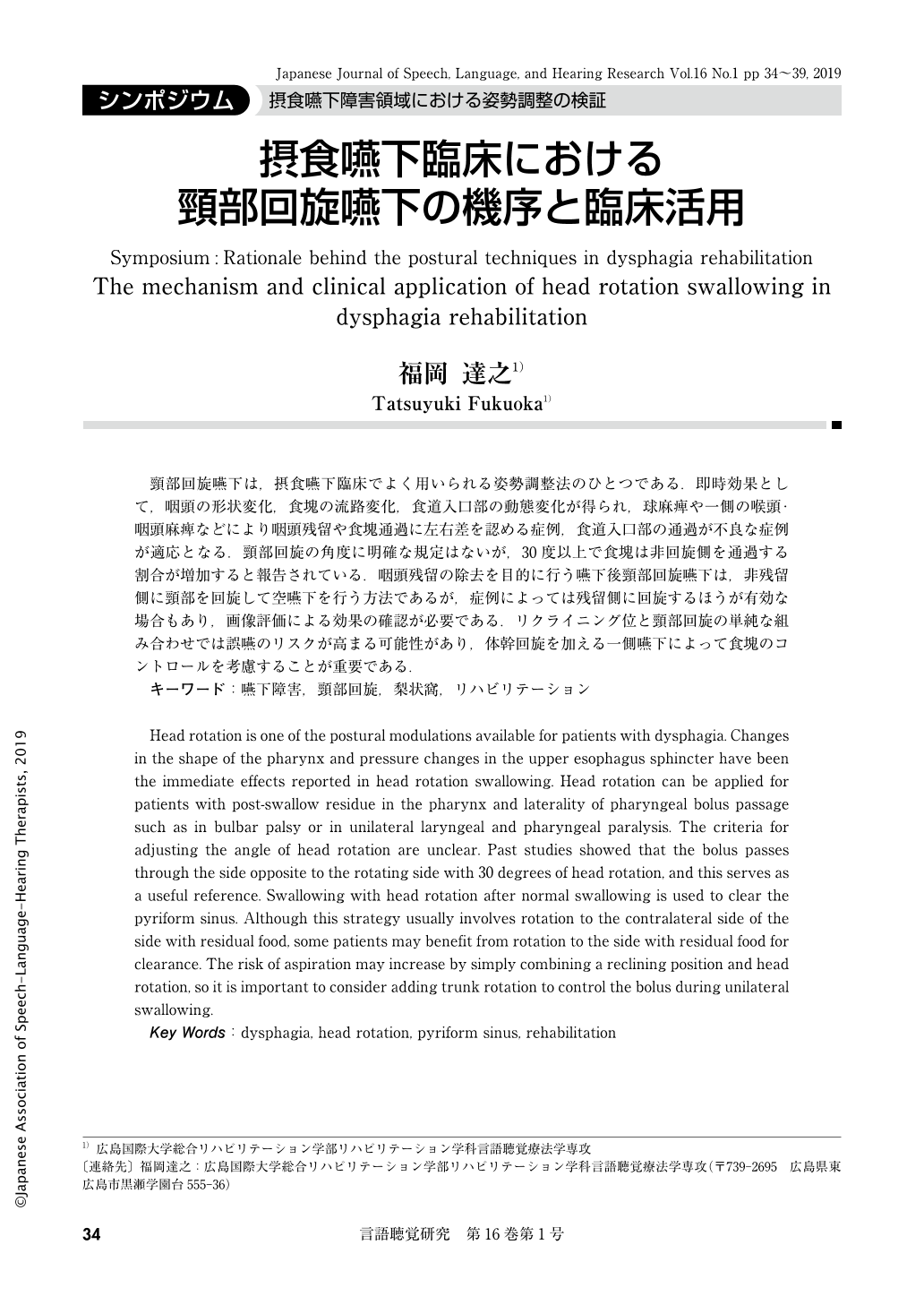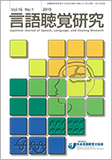Japanese
English
- 有料閲覧
- Abstract 文献概要
- 1ページ目 Look Inside
- 参考文献 Reference
頸部回旋嚥下は,摂食嚥下臨床でよく用いられる姿勢調整法のひとつである.即時効果として,咽頭の形状変化,食塊の流路変化,食道入口部の動態変化が得られ,球麻痺や一側の喉頭・咽頭麻痺などにより咽頭残留や食塊通過に左右差を認める症例,食道入口部の通過が不良な症例が適応となる.頸部回旋の角度に明確な規定はないが,30度以上で食塊は非回旋側を通過する割合が増加すると報告されている.咽頭残留の除去を目的に行う嚥下後頸部回旋嚥下は,非残留側に頸部を回旋して空嚥下を行う方法であるが,症例によっては残留側に回旋するほうが有効な場合もあり,画像評価による効果の確認が必要である.リクライニング位と頸部回旋の単純な組み合わせでは誤嚥のリスクが高まる可能性があり,体幹回旋を加える一側嚥下によって食塊のコントロールを考慮することが重要である.
Head rotation is one of the postural modulations available for patients with dysphagia. Changes in the shape of the pharynx and pressure changes in the upper esophagus sphincter have been the immediate effects reported in head rotation swallowing. Head rotation can be applied for patients with post-swallow residue in the pharynx and laterality of pharyngeal bolus passage such as in bulbar palsy or in unilateral laryngeal and pharyngeal paralysis. The criteria for adjusting the angle of head rotation are unclear. Past studies showed that the bolus passes through the side opposite to the rotating side with 30 degrees of head rotation, and this serves as a useful reference. Swallowing with head rotation after normal swallowing is used to clear the pyriform sinus. Although this strategy usually involves rotation to the contralateral side of the side with residual food, some patients may benefit from rotation to the side with residual food for clearance. The risk of aspiration may increase by simply combining a reclining position and head rotation, so it is important to consider adding trunk rotation to control the bolus during unilateral swallowing.

Copyright © 2019, Japanese Association of Speech-Language-Hearing Therapists. All rights reserved.


